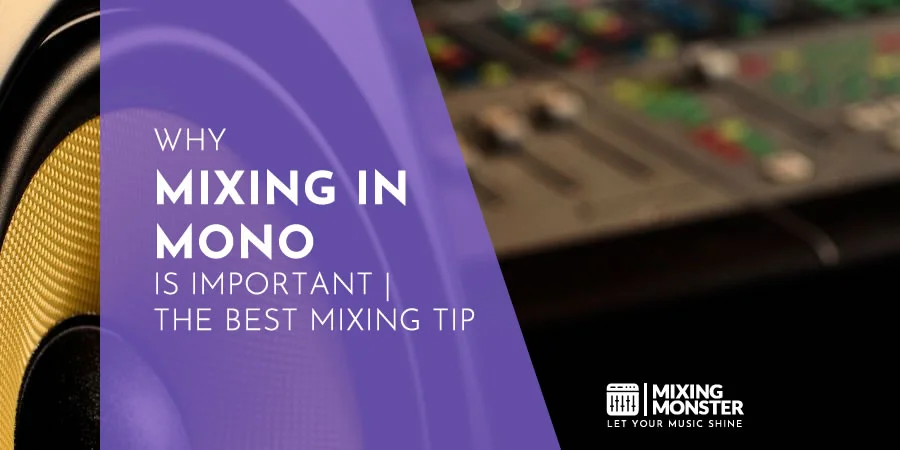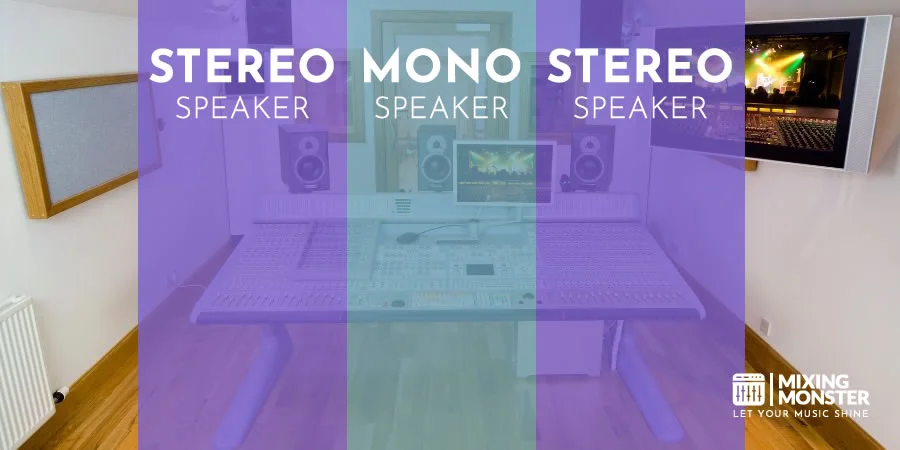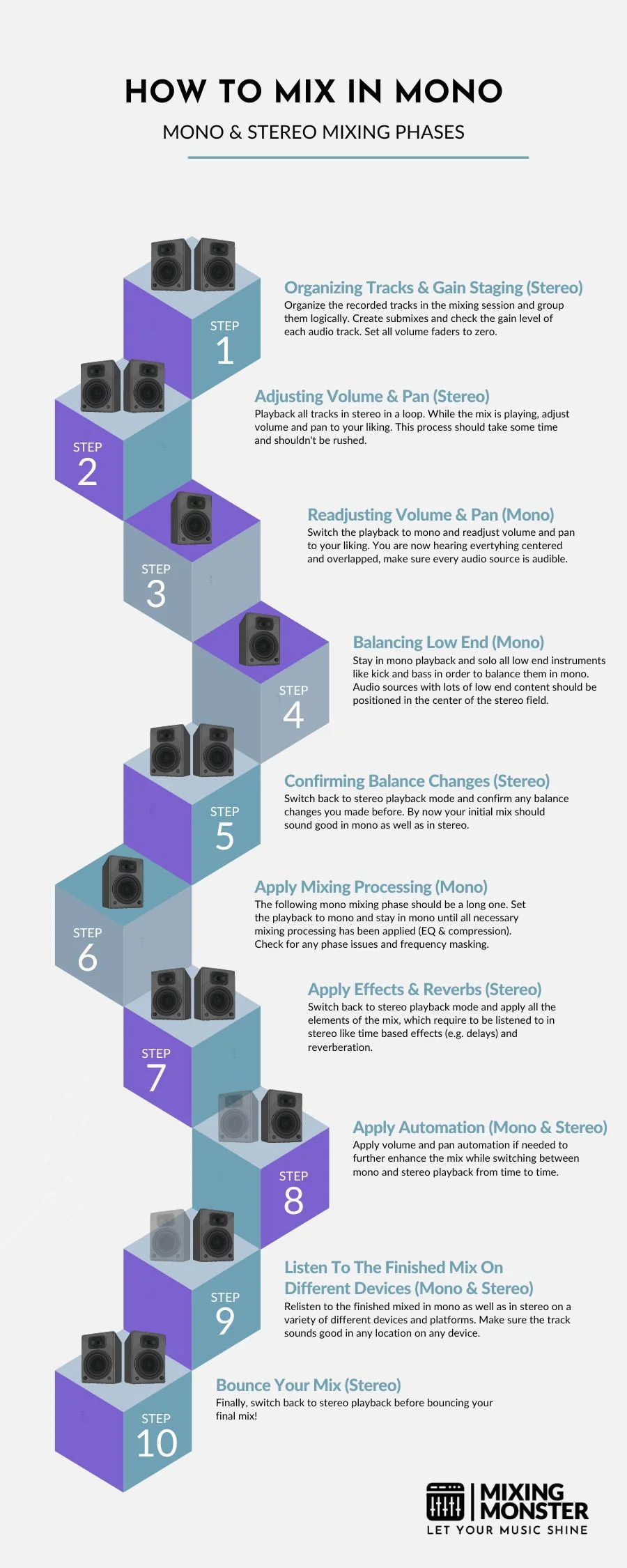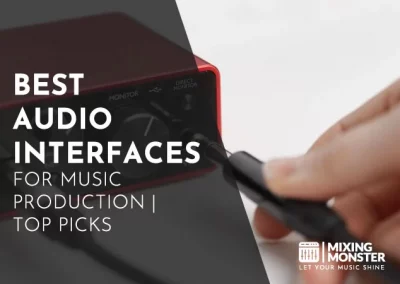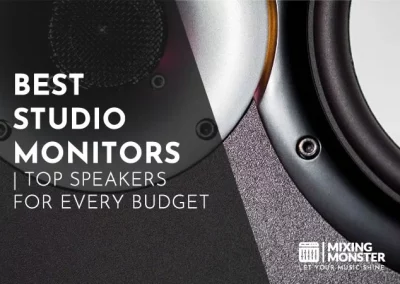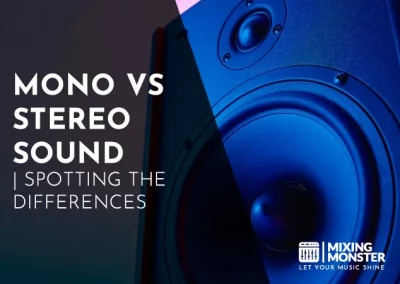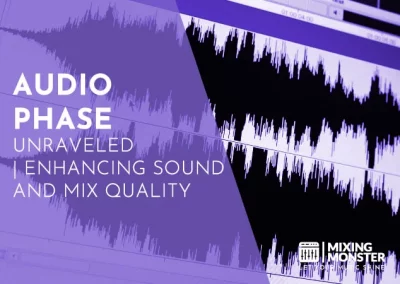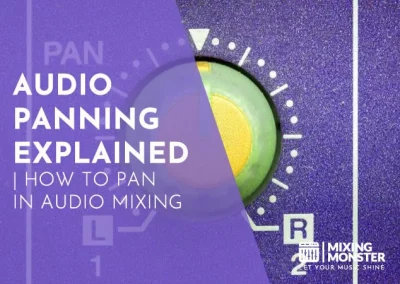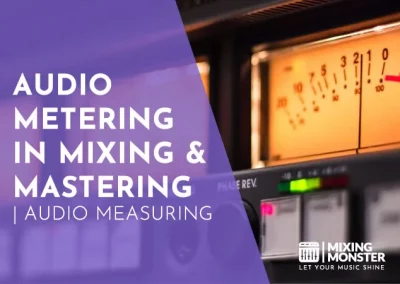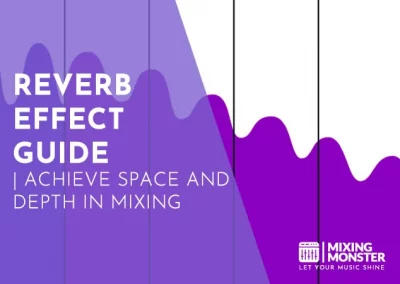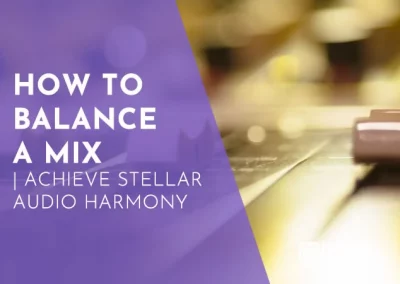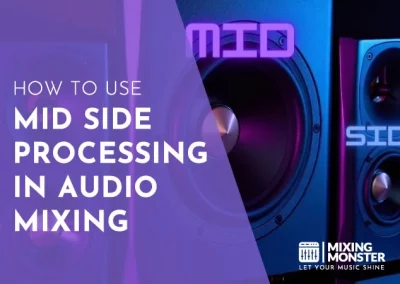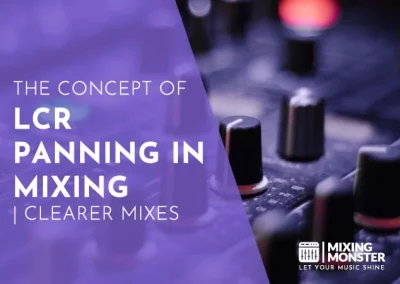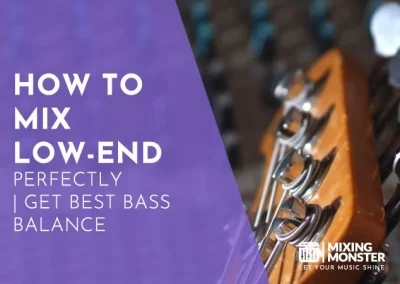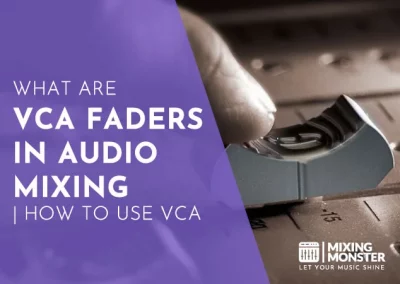Home > Blog > Mixing > Mixing Techniques
You may have heard about the concept of mixing in mono. It’s a technique that is slowly but surely gaining popularity and offers a number of benefits. It’s easy to understand why many mixing engineers have adopted this approach.
Mixing in mono is one of the most important, yet often overlooked part of the mixing process. It is the easiest way to make sure a mix sounds good on any sound system and it ensures getting the best possible mixing result. There are numerous benefits from mixing in mono.
Mixing in mono is one of the best mixing tips you will ever receive. Make sure to incorporate this technique while mixing your songs!
Table Of Contents
1. What Does Mixing In Mono Mean?
2. Why Mixing In Mono Is Important
3. Is It Better To Mix In Mono Or Stereo?
4. How To Mix In Mono
5. Tips For Mixing In Mono
6. Benefits Of Mixing In Mono

1. What Does Mixing In Mono Mean?
Mixing in mono describes a technique used during the mixing phase of the audio production process. In essence, the audio engineer mixes the track while it’s being played back in mono, meaning feeding both channels of the stereo mix (left and right) to both speakers, rather than just feeding one signal of the stereo mix to each speaker (left signal to the left speaker, right signal to the right speaker).
The stereo signal is summed up to mono, which means the listener doesn’t perceive two different channels (left and right) any more but one single channel (center).
When both speakers play the same signal, the source of the sound is perceived directly between the speakers; this is also known as a “phantom” mono sound because the real sound sources, in this example the studio speakers, are positioned on the sides.
If, on the other hand, the left and right speaker play different signals, you’ll perceive a stereo sound source that’s located somewhere between the two speakers; this is referred to as a true stereo sound source.
Mixing in mono per se is a simple procedure, and there are lots of options for doing it which we will discuss later on. Simply put, the playback of the track is switched to mono before any mixing decisions are made, either via software or hardware solutions.
2. Why Mixing In Mono Is Important
Mixing in mono is one of the best mixing tips you will ever receive. It allows you to find the weak spots in your mix (which you often do not notice while mixing in stereo) and clean them up with ease. Mixing in mono is a great way to create a cohesive mix. If you’re not mixing in mono, at least an adequate time of the whole mixing process, you’re probably not getting the best possible mix.
So why is it important? First of all, you might question yourself “who is listening in mono these days?” The quick answer is: a huge amount of people on a regular basis. Listeners often find themselves in less than ideal listening environments like in a public room, a car or at the gym.
In suboptimal listening locations, the listener perceives different volume balances coming out of each speaker because the positioning towards the speakers is at a bad angle. This can result in perceiving a mere mono signal, despite the fact that it’s broadcasted in stereo.
Supermarkets often use mono speakers for playing back music, portable bluetooth speakers often contain a single speaker (and thus are a mono audio source) and some radio stations still broadcast a mono signal.
The reason of mixing in mono is to make sure that the quality of the audio signal is good and provides an acceptable listening experience for all listeners, no matter where they are, no matter what playback system they use.

3. Is It Better To Mix In Mono Or Stereo?
Mono playback systems use one speaker to produce sound. Two speakers are required to create directional timing differences that your brain needs to perceive width and to produce a three-dimensional sound image.
The only way to make sure the audio mix sounds good in mono and stereo is by spending dedicated mixing time in both playback scenarios.
It’s not better to mix in mono or stereo, a mixing engineer should mix in mono AND stereo at different phases of the mixing process.
Let’s have a look at what happens when you’re mixing in stereo. You’re listening to both channels of the stereo audio track, while the left channel is routed to your left speaker and the right channel is routed to your right speaker.
This allows you to perceive width and to distinguish the location of an audio source within a space (like hearing an acoustic guitar on the right side of the stereo spectrum).
Some elements of a mix can only be judged correctly by listening in stereo, like some time based effects (e.g. “ping-pong” delays which alternate between the left and the right channel). Even though reverberation effects can also be perceived in mono (and can be applied in mono as well), they should also be checked in stereo.
On the other hand, while listening in mono, every audio source of the mix “overlaps” and is perceived as a centered, clumped up signal. From a mixing engineers point of view, this isn’t necessarily a bad thing because:
If a mix sounds good while being played back in mono, it certainly sounds good and most of the times way better while being played back in true stereo!
There are some crucial aspects of a mix which should be checked in mono on a regular basis. Phase cancellation is certainly one of them. Phase cancellation is an audio phenomenon where the audio waves of multiple tracks interfere with each other by eliminating certain frequencies.
By mixing in mono, phase cancellation is often revealed (like a hard panned left and right guitar are sounding good in stereo, but “disappear” while switching to mono playback) and adjustments can be made.
Another element of a mix which should always be checked in mono as well is the loudness balance of each individual instrument or vocal. By listening in mono, you make sure everything is heard the way you want it to be heard.
Last but not least, frequency overlapping or so called “masking” of different audio sources in a mix should always be checked in mono, as it is easier to notice which elements are “fighting” against each in other in the composition.

4. How To Mix In Mono
When you are mixing a recording, your main task is to find a perfect balance of a lot of different elements. A good mixing engineer mixes in stereo AND mono at different phases of the mixing process. As a rule of thumb, you should spend around 50-70% of the time mixing in mono.
Four Different Options To Playback A Mix In Mono:
- Set Your Master Bus / Master Output To Mono (e.g. By Using A Dedicated Channel Mode Button)
- Set Up A Bus Which Functions As A Submix Channel (Routed To The Master Output) And Temporarily Pan It To Mono
- Put A Plugin On Your Master Output Which Is Capable Being Switched To Mono
- Activate The Mono Button Of A Capable Audio Hardware Device, Like A Monitor Controller
Even though the purpose of this article is not to explain in full detail of how to adequately mix in mono, here is an overview to get you started in order to get the best possible mixing result:
How To Mix In Mono:
- Organize Your Tracks And Check Gain Levels Of Each Track (Gain Staging)
- Playback All Tracks In Stereo (Looped) And Adjust Volume And Pan To Your Liking
- Switch Playback To Mono And Readjust Volume And Pan To Your Liking
- Solo The Playback Of All Low End Instruments In Mono And Balance The Low End Of The Mix Separately
- Switch Back To Stereo Playback Again And Confirm Any Balance Changes
- Switch Back To Mono Playback Again And Apply Crucial Mixing Processing Like EQ And Compression While Checking For Phase Issues And Frequency Masking
- Switch Back To Stereo Playback Again And Apply Effects Like Time Based Effects, Reverbs etc.
- Apply Volume And Pan Automation If Needed To Further Enhance Your Mix While Switching Between Mono And Stereo Mode
- Relisten To The Finished Mix In Mono And Stereo On A Variety Of Devices And Platforms
- Bounce Your Mix In Stereo

5. Tips For Mixing In Mono
Tips For Mixing In Mono:
- While Mixing Your Song, Spend Around 50-70% Of The Time In Mono Mode
- Always Be Aware Of The Fact, That If A Mix Sounds Good In Mono, It Will Also Sound Good In Stereo
- Try To Mix At Low And Consistent Volume Levels In Order To Maximize Perception And To Prevent Hearing Damage
- Find A Suitable And Quick Solution For Switching Your Playback To Mono In An Instant (Hardware Button / Plugin Switch)
- Take A Look At The LCR-Mixing Concept (Panning Elements Hard Left – Center – Hard Right) Which Can Further Increase Separation And Clarity In Your Mix
- Consider Buying A Decdicated Mono Studio Speaker To Check Back Your Mix On A Single Speaker
6. Benefits Of Mixing In Mono
Mixing in mono simplifies things and allows you to focus on the important aspects of your mix. Even though it is not the most exciting process, it is crucial. The mixing decisions made while listening in mono often prevent several mixing mistakes. Mixing in mono will significantly enhance your mix.
Benefits Of Mixing In Mono:
- The Overall Volume Balance And Tonal Balance Of The Mix Increases
- Consistent Playback On Different Devices And In Different Locations Is Assured
- Frequency Masking As Well As Phase Cancellation Of Overlapping Mix Elements Is Revealed And Can Be Fixed
- The Low End Of A Mix Is Balanced
- The Mix Gets Clearer And More Impactful



